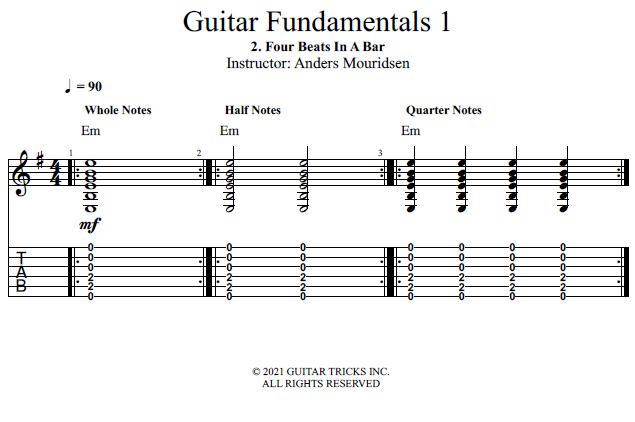Four Beats In A Bar
First let's break down how we talk about and quantify rhythm in music.
The essence of rhythm is a pulse, which just like your heartbeat is supposed to be consistent and repetitive. And just like your heartbeat you want it to keep going or the music dies.
Think of a kick drum pounding away at concert or even the rhythm of your turn signal, or the seconds ticking away in an old fashioned clock.
We measure the speed of this pulse in beats per minute, or BPM for short. So 60 BPM is the same as one second. That's the pulse and the tempo.
We group these beats in to a unit called a bar, or a measure, and most of the time one bar equals 4 beats. You've heard me count many bars in the previous examples where I've counted to 4 over and over again.
We split the bar into smaller pieces that we call subdivisions. If we play a strum that lasts all 4 beats we call it a whole note because it lasts the whole bar.
If we have two even strums in the bar we call each one a half note because each of them lasts a half bar. And four strums in the bar means each one is a quarter note.
Now we'll put all of these subdivions to work in the following lessons.

- Styles:
- Any Style
- Difficulty:
-
